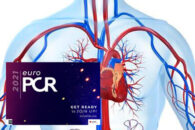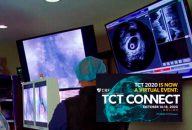PCI is far more successful at reducing ischemia when treating focal stable coronary artery disease (CAD). However, there were no differences in symptoms between both types of CAD. Physiological assessment with pressure wire pullback can be used to distinguish focal vs diffuse CAD, even though the relevance of this distinction has not been looked at…
Best Revascularization Strategy in Patients with Left Ventricular Deterioration
Multivessel disease associated to ventricular function deterioration is challenging in terms of risk, when choosing a revascularization strategy. According to this recent analysis of the SCAAR registry published in the European Heart Journal, long term followup seems to justify taking a higher risk initially, higher risk being myocardial revascularization surgery (CABG). The study looked at…
Bifurcations: A Long Return Journey
When it looked like the simplest techniques reach the best outcomes, along came the DK Crush studies. Indeed, after the COVIS III results in bifurcations, it appeared we had started to retrace our steps back to the foundation. The purpose of this study was to compare long term outcomes of the remarkably simple 1-stent strategy…
EuroPCR 2021 | A New Meta-Analysis Challenges the ISCHEMIA Trial
This paper suggests that patients with stable coronary artery disease who undergo elective coronary revascularization find a long-term benefit in terms of cardiac death compared with patients who receive medical treatment alone. These findings, presented at EuroPCR 2021 and simultaneously published in the European Heart Journal, challenge the results from the ISCHEMIA trial. Researchers state…
AHA 2020 | Effect of Evolocumab in Complex Coronary Revascularization
Evolocumab, a PCSK9 inhibitor, has shown significant reduction of complex coronary disease requiring revascularization (be it PCI or CABG). Proprotein convertase subtilisin/kexin type 9 (PCSK9) inhibitors induce plaque regression and could eventually reduce the risk of coronary revascularization, especially complex revascularization. The FOURIER study randomized 27564 patients with stable CAD already on statins to evolocumab…
AHA 2020 | The More Operators “Listen” to FFR, the Lower the Risk
When operators decide to proceed with PCI despite a negative FFR (fairly frequent in the daily practice) outcomes at 5 years are far worse. This information comes from a large Canadian register presented at AHA 2020 Scientific Sessions, simultaneously published in JAMA. PCI to a non-ischemic lesion results in increased events risk at long term,…
Angioplasty in Aspirin-Free Stable Patients with Prasugrel: Innovation Continues
Potent P2Y12 receptor inhibitors, such as prasugrel and ticagrelor, have been tested mainly in a setting of acute coronary syndromes. There is little evidence on stable patients, particularly for prasugrel. Designing a study with that purpose seemed challenging enough, but adding aspirin discontinuation in patients without a particularly high bleeding risk took this research to…
TCT 2020 | Our Next Goal Should Be Using IVUS Guidance in Every Angioplasty
The benefits of intravascular ultrasound (IVUS) guidance in all angioplasties with second-generation drug-eluting stents (DES) persist through 3 years of follow-up. These data derive from the extended follow-up of the ULTIMATE study, presented virtually at TCT 2020 and published simultaneously in JACC Intv. At 3 years, target-vessel failure remained lower in patients whose angioplasty was guided by…
TCT 2020 | Fewer Symptoms and Events when Optimizing with iFR
Symptomatic patients undergoing PCI with no residual ischemia confirmed by iFR have superior symptom improvement at one year vs. patients who did not receive the optimization. In addition to symptoms, patients receiving iFR optimization (final value ≥ 0.95) presented lower cardiac mortality, spontaneous MI or clinically justified revascularization vs. patients with <0.95 final value. …
Complex PCI: Complex Characteristics Impact Results
Patients with a bigger number of complex anatomical characteristics that increase PCI complexity have worse results at one-year followup. These data come from a large multicenter study (e-Ultimaster) recently published in EuroIntervention. The more complex the characteristics, the greater the increase in events. It is important to see past the obvious anatomical challenges (bifurcations, calcification,…









